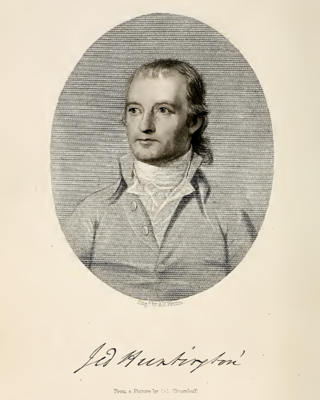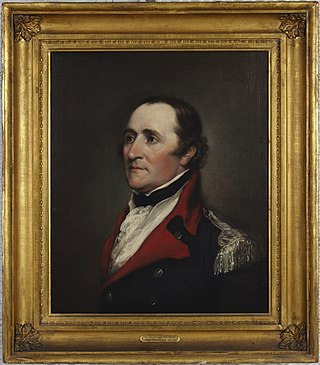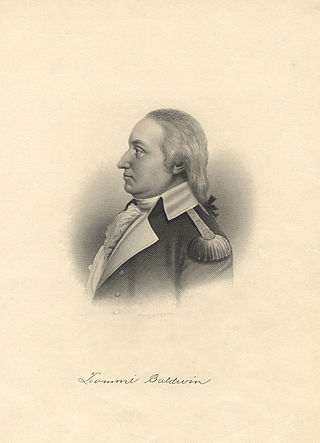The 5th Massachusetts Regiment also known as the 19th Continental Regiment was raised on April 17, 1775, under Colonel Mansfield outside of Boston, Massachusetts. The regiment saw action at the Battle of Concord, Battle of Bunker Hill, New York Campaign, Battle of Trenton, Battle of Princeton. Colonel Rufus Putnam took command in January 1777 and participated in the Battle of Saratoga.This regiment was commanded by Colonel John Mansfield, of Lynn, who left the service on September 15, 1775. From then until the end of the year the regiment was commanded by Lieutenant Colonel Israel Hutchinson, of Danvers. It served in the siege of Boston, and afterwards was designated the 27th Continental Regiment in the 1776 establishment.

The 6th Massachusetts Regiment also known as the 4th Continental Regiment was raised on April 23, 1775, under Colonel John Nixon outside of Boston, Massachusetts. The regiment would see action at the Battle of Bunker Hill, New York Campaign, Battle of Trenton, Battle of Princeton and the Battle of Saratoga. The regiment was furloughed June 12, 1783, at West Point, New York and disbanded on November 3, 1783.

The 1st Rhode Island Regiment was a regiment in the Continental Army raised in Rhode Island during the American Revolutionary War (1775–83). It was one of the few units in the Continental Army to serve through the entire war, from the siege of Boston to the disbanding of the Continental Army on November 3, 1783.

The 2nd Rhode Island Regiment was authorized on 6 May 1775 under Colonel Daniel Hitchcock in the Rhode Island Army of Observation and was organized on 8 May 1775 as eight companies of volunteers from Providence County of the colony of Rhode Island. As part of a brigade organized under Nathanael Greene, the unit participated in the Siege of Boston during the remainder of 1775. Some elements accompanied Benedict Arnold's expedition to Quebec late in the year. The unit was renamed the 11th Continental Regiment on the first day of 1776.
The 6th Connecticut Regiment was raised on May 1, 1775, at New Haven, Connecticut, as a provincial regiment for the Continental Army. It then became a regiment of the Continental Line on January 1, 1776, designated the 10th Continental Regiment, and a regiment of the Connecticut Line on January 1, 1777, again designated the 6th Connecticut. The regiment saw action at the siege of Boston, the Battle of Long Island, the New York Campaign, and its colonel and company of light infantry served in the Corps of Light Infantry at the Battle of Stony Point. The regiment was merged into the 1st Connecticut Regiment on January 1, 1783, at West Point, New York, and disbanded on November 16, 1783.

In October 1774, Jedediah Huntington of Norwich was made Colonel of the 20th Regiment of Connecticut Militia. When news of the Battles of Lexington and Concord arrived in Norwich on April 20, 1775 Colonel Huntington immediately got his men ready to march. On April 26 they arrived in Wrentham, Massachusetts, and a few days later they were in Roxbury and became part of the Siege of Boston. Because of a lack of overall command, as well as a lack of supplies, many of the militia units returned home.
The 1st North Carolina Regiment of the Continental Army was raised on September 1, 1775, at Wilmington, North Carolina. In January 1776 the organization contained eight companies. Francis Nash was appointed colonel in April 1776. The regiment was present at the defense of Charleston in 1776. It transferred from the Southern Department to George Washington's main army in February 1777. At that time, Thomas Clark became colonel of the 1st Regiment. The regiment became part of General Francis Nash's North Carolina Brigade in July.

The Connecticut Line was a formation within the Continental Army. The term "Connecticut Line" referred to the quota of numbered infantry regiments assigned to Connecticut at various times by the Continental Congress, the size of its allocation determined by the size of its population relative to that of other states. These, together with similarly apportioned contingents from the other twelve states, formed the Continental Line. The concept was particularly important in relation to the promotion of commissioned officers. Officers of the Continental Army below the rank of brigadier general were ordinarily ineligible for promotion except in the line of their own state.

The Massachusetts Line was those units within the Continental Army that were assigned to Massachusetts at various times by the Continental Congress during the American Revolutionary War. These, together with similar contingents from the other twelve states, formed the Continental Line. Line regiments were assigned to a particular state, which was then financially responsible for the maintenance of the regiment. The concept of the line was also particularly important in relation to the promotion of commissioned officers. Officers of the Continental Army below the rank of brigadier general were ordinarily ineligible for promotion except in the line of their own state.

The New Hampshire Line was a formation in the Continental Army. The term "New Hampshire Line" referred to the quota of numbered infantry regiments assigned to New Hampshire at various times by the Continental Congress. These, along with similar contingents from the other twelve states, formed the Continental Line. For the promotion of senior officials, this concept is particularly important. Officers of the Continental Army below the rank of brigadier general were ordinarily ineligible for promotion except in the line of their own state.

The Rhode Island Line was a formation within the Continental Army. The term "Rhode Island Line" referred to the quota of numbered infantry regiments assigned to Rhode Island at various times by the Continental Congress. These, together with similar contingents from the other twelve states, formed the Continental Line. The concept was particularly important in relation to the promotion of commissioned officers. Officers of the Continental Army below the rank of brigadier general were ordinarily ineligible for promotion except in the line of their own state.

Ebenezer Huntington was an officer in the Continental Army during the American Revolutionary War, and afterwards United States Representative from Connecticut.

Jedediah Huntington, was an American general in the Continental Army during the American Revolutionary War. After the war, he served in numerous civilian posts.
The 20th Continental Regiment was a unit of the Connecticut Line in the 1776 establishment of the Continental Army. It was often referred to in records as Durkee's Regiment, after Colonel John Durkee, its commanding officer for most of its existence, or incorrectly as the 20th Connecticut Regiment. The regiment was posted in New Jersey during the early stages of the New York and New Jersey campaign. The regiment retreated with George Washington's army in late 1776, and then participated in the Battle of Trenton. Some of its men chose to overstay their enlistment and also saw action in the Battle of the Assunpink Creek and the Battle of Princeton in early 1777.
The 19th Continental Regiment was a unit of the Connecticut Line in the 1776 establishment of the Continental Army. It is a successor to Webb's Connecticut Regiment, which was part of the 1775 establishment, and it continued to be commanded by Col. Charles Webb. Active during the New York and New Jersey campaign, it was on the lines but did not fight at the Battle of Long Island. It saw action at the Battle of White Plains and retreated with George Washington's army to Pennsylvania in late 1776. It then participated in the Battle of Trenton. Some of its men chose to overstay their enlistment and also saw action in the Battle of the Assunpink Creek and the Battle of Princeton in early 1777.

The 2nd Continental Artillery Regiment also known as Lamb's Continental Artillery Regiment was authorized on 1 January 1777 as Colonel John Lamb's Continental Artillery Regiment. As originally constituted, the regiment included 12 artillery companies from New York, Connecticut, and Pennsylvania. The bulk of the regiment served in the Hudson Highlands, though some companies fought with George Washington's main army from 1777 to 1779.

The 26th Continental Regiment was an infantry unit of the Massachusetts Line during the American Revolutionary War. Gerrish's Regiment was raised in the early days of the war, and the regiment underwent name changes as the Continental Army was reorganized in 1776 and 1777. From 1777 onward, the unit was known as the 9th Massachusetts Regiment.







